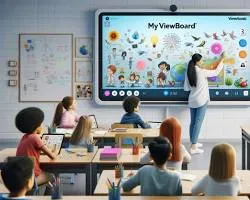A viable approach to improving education outcomes, instead of imposing top-down curriculum mandates or national standards, is to empower educators with robust, high-quality instructional materials and resources. This can be achieved through several avenues:
1. Developing Model Curricula: Crafting exemplary curricula that schools and districts can adopt or adapt, providing a solid foundation while allowing for local customization.
2. Curated Instructional Materials: Providing teachers with a selection of vetted, standards-aligned resources, saving them valuable time and ensuring content quality.
3. Professional Development: Offering comprehensive training and support to help teachers effectively implement these materials and tailor instruction to individual student needs.
This approach respects the autonomy and expertise of teachers while ensuring they have the tools and support necessary to deliver effective instruction. It also aligns with conservative principles of local control and subsidiarity, emphasizing decision-making at the most appropriate level.
Technology’s Role in Empowering Teachers:
Leading technology companies are playing a vital role in enhancing education by developing innovative tools and resources that support teachers in the classroom. IBM, for instance, has made significant strides in this area:
Personalized Learning Platforms: IBM’s AI-powered platforms analyze student data to create individualized learning plans, enabling teachers to provide targeted instruction that addresses each student’s unique strengths and weaknesses.
Intelligent Tutoring Systems: IBM’s AI-driven tutoring systems offer students personalized support and feedback, allowing teachers to devote more time to other essential aspects of instruction.
Data Analytics Tools: IBM equips teachers with data analytics tools to monitor student progress, identify areas for improvement, and make informed, data-driven instructional decisions.
Collaboration Platforms: IBM’s online platforms foster collaboration among educators, allowing them to share resources, exchange best practices, and learn from each other’s experiences.
These technological advancements, along with those being developed by other industry leaders like Google, Microsoft, and Apple, have the potential to transform education by empowering teachers and personalizing learning experiences for students.
By focusing on providing teachers with high-quality resources and leveraging technology to enhance their effectiveness, we can create a more student-centered, effective, and efficient education system. This approach empowers individuals and promotes local solutions while also embracing technological innovation to address the challenges of the 21st-century classroom.






